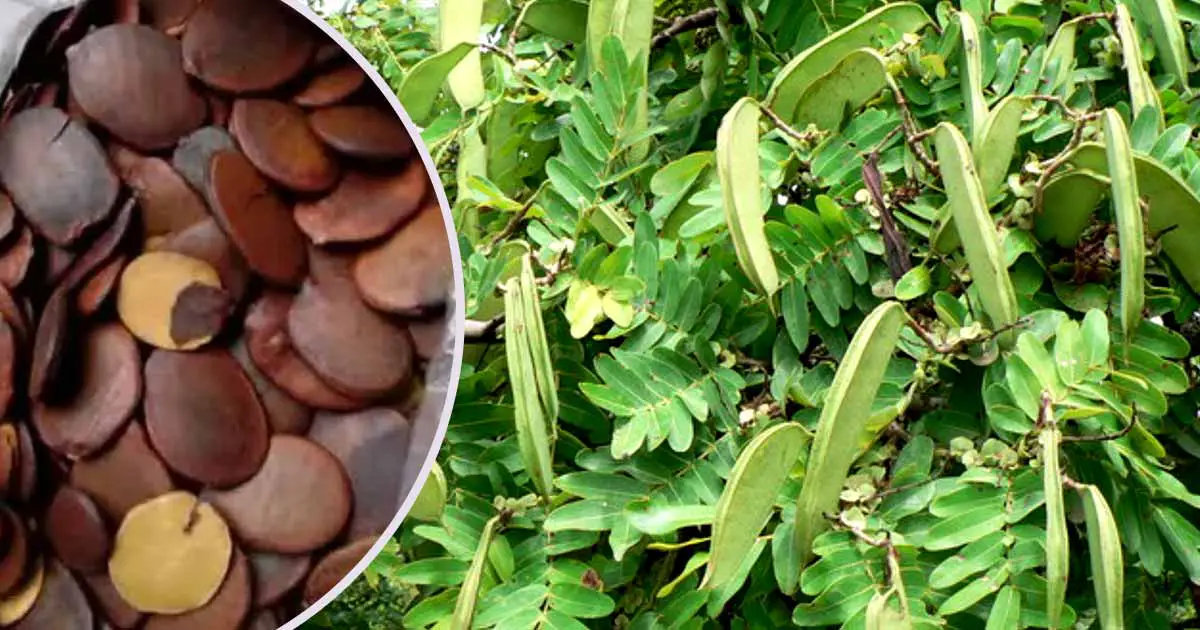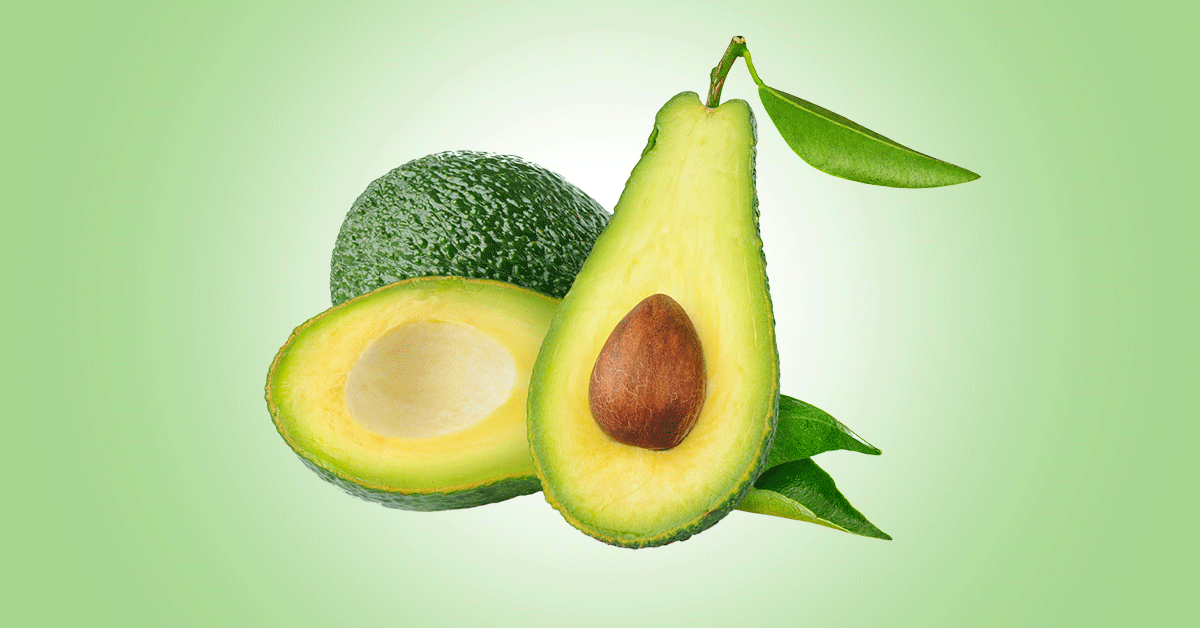Brachystegia eurycoma (achi seed) is a tropical plant from the Leguminosae family and subfamily Caesalpinioideae. This tree bears pods that contain flat seeds (achi seeds) used as a culinary ingredient, a thickening agent used to increase the viscosity of soups. The seed flour contains high quantity of water-soluble polysaccharides, and fiber.
Brachystegia eurycoma is a dicotyledonous legume which is well distributed in Nigeria, and Cameroon, and occurs in dense rain forests, stream banks, open woodland. Common names of Brachystegia eurycoma include Okwen (Nigeria), Ekop-naga (Cameroon), Bodgei (Sierra Leone), Tebako (Liberia), Mendou (Gabon), and Meblo (Côte d`Ivoire). In Nigeria, Brachystegia eurycoma seed is called Achi in Igbo, Akpakpa or Taura in Hausa, Ekalado or Eku in Yoruba, Okweri in Edo, Apaupan in Ijaw, and Odukpa in Ibibio.
The huge tree can grow up to 40 m height, and has twisted and spreading branches with a bark. The bark exudes a buttery gum. The flowering occurs in April and May, while the fruit ripens between September and January.
In the traditional processing of the seeds, they are roasted and soaked in water to expose the cotyledons. The cotyledons are soaked in water overnight, and the water drained off. The cotyledons are then sun-dried and ground to powder.
Brachystegia eurycoma (achi seeds) are used in flavoring, thickening soups like oha leaf soup, bitter leaf soup, and egusi soup (melon).
In traditional medicine, Brachystegia eurycoma stem exudate is used to treat wounds, syphilis, dysentery, and infections, as it has both antifungal and antibacterial activity. The seed and stem bark also has anti-inflammatory activity. The seed flour is used to treat high body temperature, to soften the stool, and to manage colon disorders. The wood is known as ‘naga’ or ‘okwen’ in trade, and is used for furniture.
As a functional ingredient, the seeds have been investigated for use in bakery products, meat-based products, and as a stabilizer in yogurt. In yogurt, it improved the protein, fat, ash, and carbohydrate levels, and reduced the moisture levels.
Constituents of Brachystegia eurycoma seeds
Brachystegia eurycoma seeds and stem bark extracts contain bioactive compounds like phenolic compounds, alkaloids, saponins, steroids, and tannins.
The seeds contain bioactive compounds like furo-chrome-4-one compounds, while stem extract contains 4-(4-phenyl-1,4-dihydronaphthalen-1-yl). Stem exudate contains is-6,6-methylenebis (4-tert-butyl-2-methylphenol), and 3-hydroxy-2,2-bis(6-methoxy-3-methyl-2,3-dihydrobenzoic furan-2-yl).
Essential oils from the leaf extract contain oxygenated monoterpenoids, sesquiterpenoid hydrocarbons, acorenone, 1,8-cineole, β-caryophyllene, and geranyl acetone.
The hydrocolloids-starch extracted from the seed has good swelling, pasting and temperature property, and can compete favorably with other hydrocolloids or food gums such as gum Arabic and guar gum.
Nutritional Composition
Proximate analysis of the seed reveals estimated values of proteins (7.2% to 8.75%), carbohydrates (53.57% to 59%), fats (4.49% to 14%), crude fiber (3% to 17.2%), and ash (5%).
B. eurycoma seeds contain macro and micro-elements like calcium, magnesium, potassium, sodium, phosphorus, iron, copper, and zinc. It also contains vitamins like ascorbic acid, niacin, riboflavin, and thiamine.
The seed oils (5.87 g) contains linoleic, palmitic, oleic, and stearic acids, and is similar in composition to sunflower oil, or groundnut oil. The oil also contains phospholipids like phos-phatidic, phosphatidylinositol, phospatidyserine, and phosphatidyethanolamine.
The raw, boiled, roasted, boiled, and fermented seeds contain varying levels of amino acids. Aspartic acid, glutamic acid, leucine, arginine, alanine, phenylalanine, lysine, proline, are the most abundant amino acids.
However, Brachystegia eurycoma seeds contain antinutrients such as phytates, tannins, and cyanides, which could interfere with the absorption of nutrients in the body. However, the quantity is below the toxic range. Also, processing methods used for the seeds can help to remove the anti-nutrients.
Health Benefits of Brachystegia eurycoma seeds
Brachystegia eurycoma has antioxidant, antimicrobial, anti-inflammatory, analgesic, anticancer, anti-diabetic, lipid lowering, and liver protective effect.
Antioxidant effect:
A compound extracted from the seed, 2-(-4-ethylphenyl)-5-hydroxy-3-methyl-6,7-dihydrofuro-chromen-4-one exhibit free radical scavenging capacity and inhibition of lipid peroxidation in in-vitro experimental result. There are other polyphenolic compounds such as phenols, tannins and flavonoids with antioxidant property.
Antimicrobial activity:
Stem bark extract of B. eurycoma has a mild antibacterial activity against E. coli, Bacillus subtilis. Propanal from stem exudates inhibits P. aeruginosa, S. faecalis, and B. cereus, while naphtalene petenoic acid from stem bark inhibits S. aureus, E. coli, P. aeruginosa, and S. faecali.
Furo-chromen-4-one compound from the seed has antifungal activity against A. niger, P. notatum, and F. oxysporium, while the stem bark extract inhibits C. albicans, A. flavus, A. fumigatus, A. niger, E. floccosium, F. solani, M. audonii, and T. verrucasum.
Analgesic activity:
The methanolic stem bark extract reduced acetic acid-induced writhes in Swiss albino after oral administration (Igbe I, et al. 2012)
Anti-inflammatory effect:
The methanol extract of Brachystegia eurycoma seeds inhibited both the carrageenan-induced, and dextran-induced paw edema in Wistar rats. The ethanol extracts of the seeds and stem bark also inhibited the formalin-induced chronic inflammation in albino rats (Igbe I et al., 2012).
These experimental results point to the anti-inflammatory property of the plant extract.
Prevention of colon cancer:
Brachystegia eurycoma seeds contain crude fiber and polyphenols, which could prevent cancer, and colorectal issues.
Brachystegia eurycoma significantly prevented N-Methyl-N-nitrosourea (MNU) induced elevation of malondialdehyde and carcinoembryonic antigen (CEA), and increased the activity of antioxidant enzymes like catalase and superoxide dismutase in rats instilled with MNU through rectal administration (Uju Dorathy Iliemene et al. 2019).
It reduced the mucosal ulceration with moderate inter-glandular inflammation in the MNU treated rats.
Diabetes management:
The extracts of B. eurycoma and D. microcarpum seeds flours inhibit the activities of α-glucosidase, α-amylase, and aldose reductase. They delay carbohydrates digestion, and reduced the rate of glucose absorption, and rise in postprandial blood glucose (Emmanuel Anyachukwu Irondi et al., 2015)
The antioxidant property of the plant also protect the beta-cells of the pancreas from oxidative damage.
Anti-ulcer property:
The B. eurycoma extract exhibit anti-ulcer effect by inhibiting ethanol-induced gastric lesion, and decreasing ulcer index in a dose-dependent manner (Femi-Ola TO, et al., 2008).
Gastrointestinal effect:
The methanol extract of B. eurycoma stem bark reduced the intestinal transit time and propulsive movement in castor oil induced diarrheal rats.
The extract caused a dose-dependent reduction in the onset of diarrhea, reduction of diarrhea, and weight of wet stools.
Lipid lowering effect:
The extract of the seeds has a positive effect on lowering the serum cholesterol and positive effect on reducing the risk of heart disease (Okwu, 2004).
Toxicity
The stem bark extracts of the B. eurycoma did not show any toxicity or lethality in male Swiss albino mice during in vivo sub-acute toxicity study. There were no significant changes in organ weights of heart, kidney, liver, and spleen, or liver enzymes.
References:
- http://www.tropicaltimber.info/specie/naga-brachystegia-eurycoma/
- https://doi.org/10.1016/j.jep.2019.111858
- https://www.ncbi.nlm.nih.gov/pmc/articles/PMC7505759/#:~:text=Brachystegia%20eurycomaand%20Detarium%20microcarpum%20are,Onimawo%20and%20Egbekun%2C%201998).
- https://www.ncbi.nlm.nih.gov/pmc/articles/PMC7505759/#:~:text=Brachystegia%20eurycomaand%20Detarium%20microcarpum%20are,Onimawo%20and%20Egbekun%2C%201998).
- https://www.ajol.info/index.php/ijhpr/article/download/122137/111614/0
- https://tropical.theferns.info/viewtropical.php?id=Brachystegia+eurycoma
- https://doi.org/10.1016/j.fshw.2015.08.002












